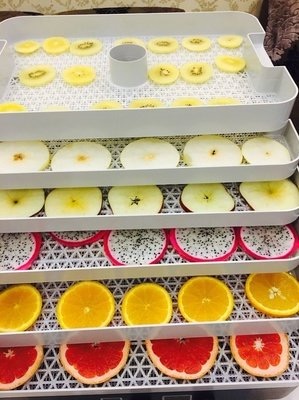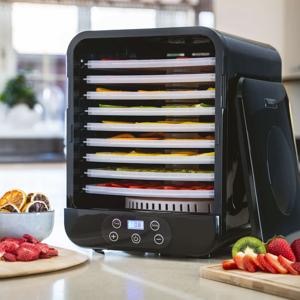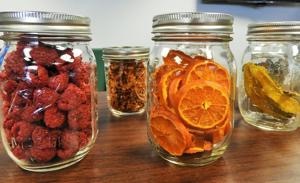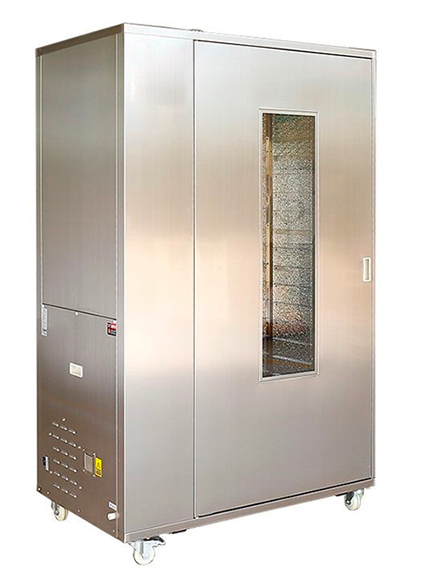
Content Menu
● Understanding Heat Pump Technology
>> How Heat Pump Dryers Work
● Advantages of Heat Pump Dryers for Food Dehydration
>> Nutritional Benefits of Dehydrated Foods
● Comparing Heat Pump Dryers with Traditional Dehydrators
● Applications of Heat Pump Dryers in Food Processing
>> Innovations in Food Dehydration Technology
● Maintenance and Operation of Heat Pump Dryers
>> Troubleshooting Common Issues
● Conclusion
● Frequently Asked Questions
>> 1. Can I use a heat pump dryer without a drain connection?
>> 2. What types of foods can be dried using a heat pump dryer?
>> 3. How does a heat pump dryer compare in cost to traditional dehydrators?
>> 4. Is it safe to dry meats in a heat pump dryer?
>> 5. What maintenance is required for a heat pump dryer?
Food dehydration is an age-old preservation method that extends the shelf life of fruits, vegetables, and meats while retaining their nutritional value. As the demand for healthy snacks and natural food preservation grows, the importance of efficient food dehydrators has surged. This article explores the role of heat pump dryers in food dehydration, their advantages, and how they differ from traditional methods.

Understanding Heat Pump Technology
Heat pump dryers operate on a unique principle that sets them apart from conventional dryers. Instead of venting hot air outside, they recycle air within a closed system. This process not only conserves energy but also maintains a consistent temperature, crucial for effective food drying.
How Heat Pump Dryers Work
Heat pump dryers utilize a refrigeration cycle to remove moisture from food. The main components include:
- Compressor: Pressurizes refrigerant gas, releasing heat.
- Condenser: Cools the hot gas, condensing it into liquid.
- Evaporator: Absorbs heat from the air and evaporates the refrigerant back into gas.
The cycle continuously circulates warm air over the food, extracting moisture without cooking it. This method is particularly advantageous for dehydrating sensitive foods that require low temperatures.
Advantages of Heat Pump Dryers for Food Dehydration
Using heat pump technology in food dehydrators presents several benefits:
- Energy Efficiency: Heat pump dryers consume significantly less energy compared to traditional electric or gas dryers. They can save up to 68% in energy costs over conventional methods.
- Consistent Temperature Control: Maintaining a steady temperature between 85°F to 160°F ensures that food dries evenly without cooking or damaging delicate nutrients.
- Versatility: Heat pump dryers can effectively dry a variety of foods, including fruits, vegetables, herbs, and meats. This versatility makes them suitable for both home and commercial use.
- Environmentally Friendly: By reducing energy consumption and eliminating the need for external venting, heat pump dryers contribute to lower carbon footprints.
Nutritional Benefits of Dehydrated Foods
Dehydrating foods using heat pump technology not only preserves them but also retains their nutritional value. Unlike traditional methods that may involve high temperatures leading to nutrient loss, heat pump dryers operate at lower temperatures, ensuring that vitamins and minerals remain intact.
For instance:
- Fruits: Dehydrated fruits maintain their fiber content and essential vitamins like Vitamin C and A.
- Vegetables: Vegetables retain their antioxidants and minerals when dried at controlled temperatures.
- Herbs: Drying herbs with minimal heat helps preserve their aromatic oils and flavors.
This focus on nutrition makes heat pump dryers an ideal choice for health-conscious consumers looking to create wholesome snacks.

Comparing Heat Pump Dryers with Traditional Dehydrators
To understand the advantages of heat pump dryers better, here's a comparison with traditional dehydrators:
| Feature | Heat Pump Dryer | Traditional Dehydrator |
| Energy Consumption | Low (up to 68% savings) | Moderate to High |
| Temperature Range | 85°F to 160°F | Typically 95°F to 165°F |
| Moisture Removal | Efficient moisture extraction | Varies based on airflow |
| Cooking Risk | Minimal risk of cooking | Higher risk if temperature is too high |
| Versatility | High (suitable for various foods) | Limited (specific to certain foods) |
Applications of Heat Pump Dryers in Food Processing
Heat pump dryers are increasingly being adopted in various sectors of the food industry due to their efficiency and effectiveness:
- Commercial Food Production: Manufacturers utilize heat pump technology for bulk drying operations, ensuring consistent quality and reduced energy costs.
- Home Use: Home cooks and health enthusiasts employ heat pump dryers to create healthy snacks like dried fruits and vegetable chips without preservatives.
- Specialized Products: Foods requiring specific drying conditions, such as herbs or delicate fruits, benefit significantly from the controlled environment provided by heat pump dryers.
Innovations in Food Dehydration Technology
The evolution of food dehydration technology has led to innovations that enhance the performance of heat pump dryers. Some notable advancements include:
- Smart Controls: Many modern heat pump dryers come equipped with smart technology that allows users to monitor and control drying processes remotely via smartphone applications.
- Advanced Sensors: Sensors that detect humidity levels can automatically adjust temperature settings for optimal drying conditions.
- Multi-Layer Racks: Some models feature adjustable racks that allow users to maximize space while ensuring even airflow around all items being dried.
These innovations not only improve user experience but also enhance the quality of dehydrated products.
Maintenance and Operation of Heat Pump Dryers
To ensure optimal performance and longevity of heat pump dryers:
- Regular Cleaning: The condenser coils should be cleaned periodically to prevent lint buildup, which can affect efficiency.
- Moisture Management: Depending on the model, users may need to manually empty water tanks or connect the dryer to a drainage system for continuous operation.
- Monitoring Temperature Settings: Keeping an eye on temperature settings ensures that food dries properly without cooking or losing nutrients.
Troubleshooting Common Issues
While heat pump dryers are generally reliable, users may encounter some common issues:
- Drying Time is Too Long: This could be due to overloaded trays or incorrect temperature settings. Ensure trays are not overcrowded and adjust settings as necessary.
- Moisture Buildup in the Unit: If moisture accumulates inside the dryer, check the drainage system or empty the water tank regularly if applicable.
- Inconsistent Drying Results: This may occur if items are not cut uniformly. Ensure that all pieces are similar in size for even drying results.
Conclusion
Heat pump dryers represent a significant advancement in food dehydration technology. Their energy efficiency, consistent drying capabilities, and versatility make them an excellent choice for both commercial producers and home users. As consumers continue to seek healthier options and sustainable practices in food preservation, heat pump dryers are poised to play an essential role in meeting these demands.

Frequently Asked Questions
1. Can I use a heat pump dryer without a drain connection?
Yes, many models come with a water tank that collects moisture during operation. Users can manually empty this tank instead of connecting it directly to a drain.
2. What types of foods can be dried using a heat pump dryer?
A wide variety of foods can be dried using this technology, including fruits, vegetables, herbs, meats, and even flowers.
3. How does a heat pump dryer compare in cost to traditional dehydrators?
While the initial investment may be higher for heat pump dryers, their energy efficiency can lead to significant savings over time compared to traditional dehydrators.
4. Is it safe to dry meats in a heat pump dryer?
Yes, as long as proper temperatures are maintained throughout the drying process to ensure safety and quality.
5. What maintenance is required for a heat pump dryer?
Regular cleaning of condenser coils and monitoring water levels in the collection tank are essential for optimal performance.












